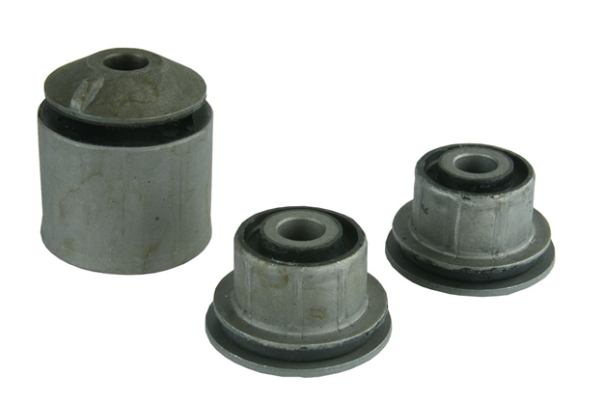 |
| The SAI pump with its vacuum-controlled outlet valve attached by a hose to the lower left. |
Be aware enterprising mechanics will suggest a $8K~$12K top-end rebuild is necessary to address a clogged Supplemental Air Injection (SAI) system. This is NEVER the case because the ports can be snaked out with the engine in the car to resolve this issue.
Here is how I would proceed to test the SAI system:
If you are using Durametric to diagnose the SAI system make sure you are using the latest software from their site. If not, first uninstall what you have and reinstall the latest version, clear, and rerun the code. Durametric had a known issue related to oxygen sensor-derived codes on earlier software revisions and also with their old-style cable and software.
- Replace the SAI check valve, discussed on the below page, and clear the code and see if it returns:
https://993servicerepair.blogspot.com/2020/02/emission-control-systems-horror-of.html
- If the code returns detach the hose to the new check valve, with the engine dead cold, have a friend start the car when you are behind it. If the air pump, the SAI control solenoid, and the vacuum-controlled SAI valve are working you will hear what sounds like a LOUD jet engine sound for just a few seconds and strong airflow from the hose. If this checks out reinstall the hose, clear the code, and see if it returns.
This test can only be done once at an initial cold start or again much later, as in overnight, from a dead cold engine.
if your OBDC reader features actuations one can turn the pump on manually as well although I am not sure it will also actuate the solenoid control valve for the vacuum-controlled valve attached to the pump outlet. For this reason, the sound from the hose may be blocked by the valve. If the valve doesn't open with the pump's actuation it will be unclear if the valve or its solenoid is not working or the actuation function on your OBD reader just turns on the pump and doesn't open the valve.
An inoperative SAI pump does not influence the performance or durability of the engine and gaining access to replace the pump's wires is labor intensive. For this reason, it may be best to wait until other servicing such as replacing the clutch or servicing the transmission is needed, greatly facilitating access to the pump on the back of the engine.
- After the wires are replaced, and the pump checks out clear the codes and see if they return.
- If the pump, the SAI control solenoid & valve check out replace the two oxygen sensors for that side of the car, bank 1-3 (left side) or 4-6 (right side) based on the OBD Code listed.
Using an evaluation of the signal from the Oxygen Sensors rather than just replacing them may be problematic. Old sensors take longer to warm up and light off (begin to signal properly). In such cases, the immediate period of the SAI start-up test may have passed before the Oxygen Sensors send reliable information triggering a Check Engine Light (CEL). Looking at the output data once the engine has been running for a minute or two will show the faulty sensors working correctly even though they may not have been at the beginning of a cold start.
- With new oxygen sensors, a new check valve, and verification that the pump and its vacuum control valve are working the next step is to clear the OBD code and see if it returns.
- If the code returns you likely will need to have the exhaust valve air injector ports cleaned as described on this page:
If you found this page informative return to the main page and bookmark it for future 993-related servicing, repair, and upgrading guidance & information. If it saved you some aggravation, time or even some coin consider a donation through the button on the top left margin of this page.





























